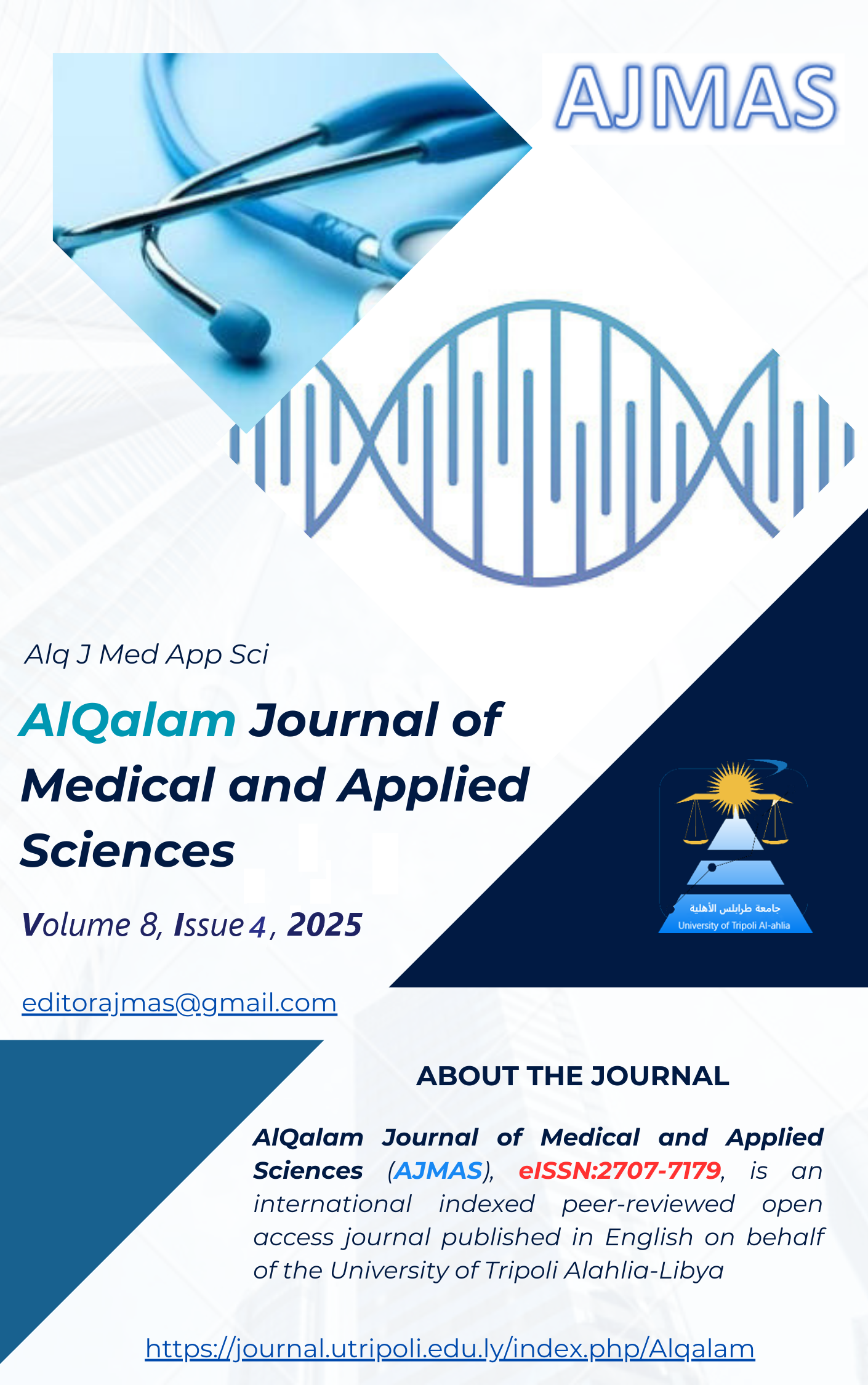Comparative Study of Epidemiology, Sensitivity, and Antimicrobial Resistance of Urinary Tract Infections in Tobruk’s Children: A Cross-Sectional Analysis of Under-5 and School-Age Groups
DOI:
https://doi.org/10.54361/ajmas.258413Keywords:
Urinary Tract Infections, Preschool-age, School-age, Escherichia Coli & Antimicrobial Resistance.Abstract
Urinary tract infections (UTIs) are a leading cause of bacterial illness in children, with significant potential for long-term complications. In Libya, particularly in the Tobruk region, there is a critical lack of data on the epidemiology and antimicrobial resistance (AMR) patterns of pediatric UTIs, hindering effective treatment and stewardship efforts. This study aimed to compare the epidemiology, bacterial etiology, and antimicrobial susceptibility profiles of UTIs between preschool-age (PSA, <5 years) and school-age (SA, 5-12 years) children in Tobruk, Libya. A cross-sectional study was conducted on 343 pediatric patients presenting with UTI symptoms. Midstream urine samples were collected and processed using standard microbiological techniques. Bacterial isolates were identified, and antimicrobial susceptibility testing was performed using the Kirby-Bauer disk diffusion method against a panel of eight antibiotics. Data were analyzed using descriptive statistics. Of the 343 patients, 61.2% (n=210) were school-aged and 38.8% (n=133) were preschool-aged. Females accounted for 63.8% of cases. A high rate of negative cultures was observed, especially in males. Escherichia coli was the predominant pathogen in both age groups, but was significantly more common in females. Antimicrobial susceptibility testing revealed alarmingly high resistance rates to first-line antibiotics: amoxicillin-clavulanate (Augmentin) and cefotaxime were largely ineffective. In contrast, the highest in vitro efficacy was observed for carbapenems (imipenem, 58.9%; meropenem, 60% susceptibility for E. coli) and aminoglycosides (amikacin and gentamicin). Notably, 17.9% of E. coli isolates were resistant to trimethoprim-sulfamethoxazole (Septrin). This study reveals a severe burden of antimicrobial resistance in pediatric UTIs in Eastern Libya, with first-line oral therapies showing poor efficacy. There are distinct age and gender disparities in prevalence and etiology. These findings underscore an urgent need to revise local empirical treatment guidelines to favor more effective agents like aminoglycosides and to implement robust antibiotic stewardship and surveillance programs to combat the escalating AMR crisis.
Downloads
Published
How to Cite
Issue
Section
License
Copyright (c) 2025 Khadeejah AL-Khurum, Eisa Omar, Shareefah Jadullah

This work is licensed under a Creative Commons Attribution 4.0 International License.














